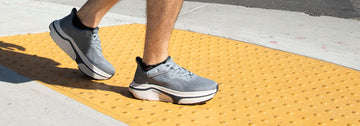Parkinson’s Foot Pain: Problems and Treatments


Posted by:
Johannes Sauer
Reviewed by:
Updated at: August 28, 2024
CHECK OUT THE LATEST IN ADAPTIVE FOOTWEAR...
FAQ
Is foot pain a symptom of Parkinson’s disease?
Can Parkinson’s disease cause neuropathy in feet?
What are the symptoms of dystonia in the feet?
What triggers foot dystonia?




![[color: black] Original Men's Adaptive Shoe](http://cadense.com/cdn/shop/files/Mens-BLK-T1-LG.jpg?crop=center&height=300&v=1765338442&width=300)
![[color: white] Original Women's Adaptive Shoe](http://cadense.com/cdn/shop/files/Womens-WHT-T1-LG.jpg?crop=center&height=300&v=1765381322&width=300)





